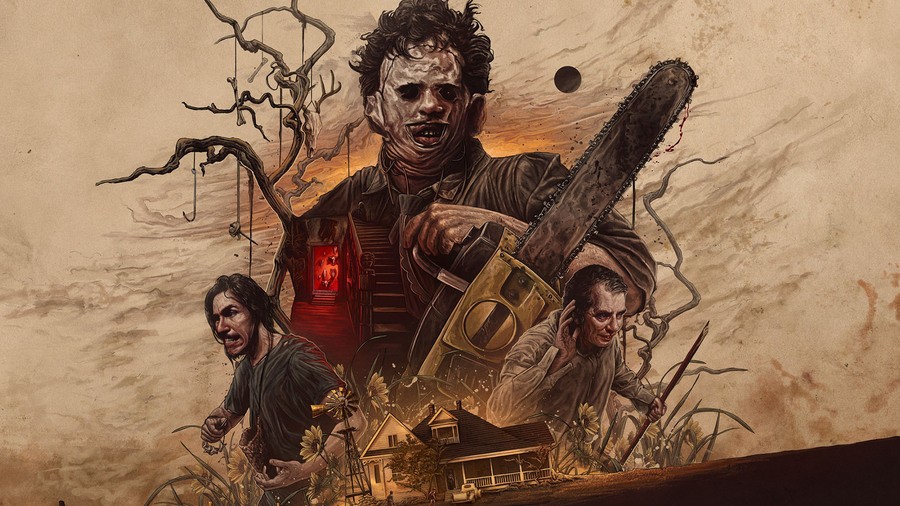
We've seen a fair few beloved horror movies transformed into asymmetrical multiplayer experiences in recent years. Friday the 13th: The Game, Evil Dead: The Game, and Predator: Hunting Grounds have all tried to capture the magic of their respective source material to varying degrees of success. The Texas Chain Saw Massacre is next in line — a game based on the highly influential 1974 classic.
Developer Sumo Nottingham, in collaboration with Gun Interactive and the original movie's rights holders, are hoping to deliver something special, foregoing some of the typical beats of asymmetric horror. We spoke with the Sumo team's Kelvin Moore and Darren Campion to explore how The Texas Chain Saw Massacre does justice to the movie while presenting something fresh for players.
Push Square: Firstly, for our readers, would you introduce yourselves and your roles at Sumo Nottingham?
KM: I'm Kelvin Moore, I'm the project design director at Sumo Nottingham on The Texas Chain Saw Massacre.
DC: And I'm Darren Campion, I'm the senior executive producer at Sumo Nottingham.
The Texas Chain Saw Massacre is an asymmetrical multiplayer horror game. Could you give us an outline of what it's all about?
KM: So [this game] is based on the original 1974 classic horror film, which set the precedent for slasher [movies] that came after it in terms of its unique tone and style of horror. That's been authentically recreated in the gameplay.
So there's three family members and four victims. The victims start in the basement, and they've got to escape by any means necessary. Then you've got the three family members, who are from the film. So we've currently got Leatherface — the big guy with the chainsaw — the Cook, and the Hitchhiker. In the film they're all related, they're family, and we've brought that into the gameplay as well. Family's important to them in the film, and so it's important to them in the game — the way they communicate and work together. There's a lot of team play here, mixing your abilities and the synergy between them.
That goes for the victims as well. They've all got their own abilities, playstyles, strengths, and weaknesses, so working together to escape is paramount.
It's fascinating to see all these horror franchises being explored with their own multiplayer games. How did this project come about?
KM: Gun came to us a couple of years ago, just before the pandemic started. They had the concept going for a short while; they were approached by Kim Henkel, the rights holder of The Texas Chain Saw Massacre. They saw how well [Gun] had treated Friday the 13th, so they did the initial legwork, but needed a triple-A development studio, and that's where Sumo came in. Since then we've co-developed, built the pillars and the core experience over the past two years.
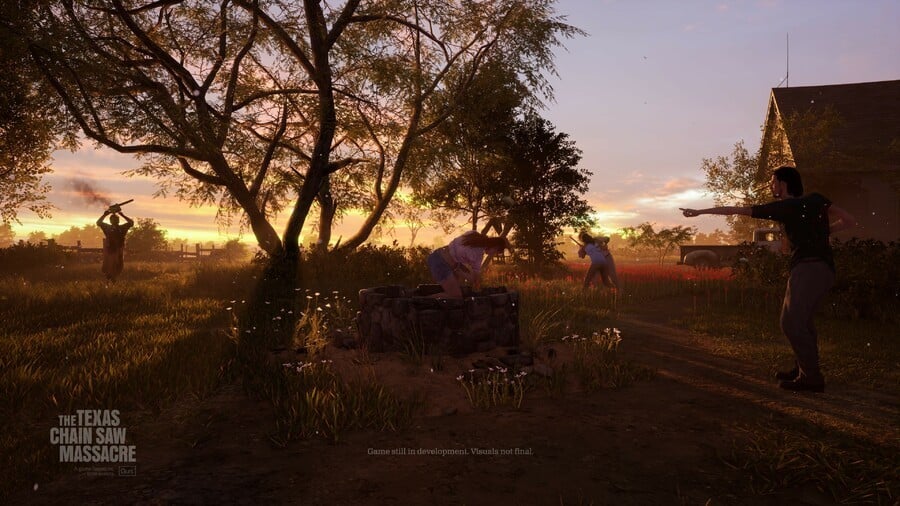
I mean, that sort of answers my next question, which is: why a multiplayer game and not a single-player experience? But it seems the rights holders wanted a similar treatment for Texas Chain Saw Massacre as Gun had provided for Friday the 13th?
DC: This is considered a prequel, set just before [the events of the 1974 film]. So it's another group of victims, and before release, we'll go through what their story is. It was very important that we create a canon story. Kim Henkel, who owns the IP, came to Gun because he knew they could handle it right, and he's also very much been involved, giving his blessing, but he also knows he can trust us. Everything we've shown him and gone through, he knows we understand the IP.
It was very important to us that we made a game that wasn't just "skinned" with The Texas Chain Saw Massacre. It's how do we make a game that no one else can do without this IP? What can this IP give us? That's where it's pushing the creativity from Sumo Nottingham and Gun — every time you play this, you're gonna play a prequel to that movie. Whether it's a 10-minute game or a 25-minute game depending how you play it, it's like you're creating that movie before it.
So it was always intended to be asymmetrical multiplayer horror? There wasn't the suggestion of a Resident Evil-style, single-player experience?
KM: Yes. It's easy to reach for those obvious goals, but that's not what Gun does, and it's not what we do. How do we maximise our use of this [IP], what can we only do with this IP?
It's all about the family. Okay, then we need the playable family. We need Leatherface, the Hitchhiker, and the Cook, playable, as a family together. And then it goes through the gameplay, the stealth. You're playing against human opponents — you've not got vision cones and exclamation marks above their heads. You're watching for them. Are they looking at you? What are they gonna do? Can I hide here, can I not? What are they thinking? You just don't get that experience in anything that's scripted or single-player.
DC: And the next time you play, it could be completely different. You've got these four victims and from the beginning, it's all about stealth. Can I hide in the shadows? We put you in that crouch position from the word go, that's your default position. So, it's showing you — use the environment, use the shadows. Lighting has become an important part of gameplay, it's not just an aesthetic thing.
And that's not just with the victims, it's for the family as well. Just having one family member there, it would've made it almost the same every time, but the family can play differently every time. Their strategy can change, so it completely mixes up that type of gameplay more so than if you had just one killer.
So would you say the family is what makes The Texas Chain Saw Massacre stand apart from other asymmetrical multiplayer titles? There are a lot of them around right now.
KM: Yeah, we get that a lot. There were questions we asked ourselves at the beginning — how is this different to Dead by Daylight and Friday the 13th? But you play it and it is a totally different experience. For starters, it's daytime. We're not relying on horror tropes to get people through there and scare them. We've got the family aspect. It's built all around this IP.
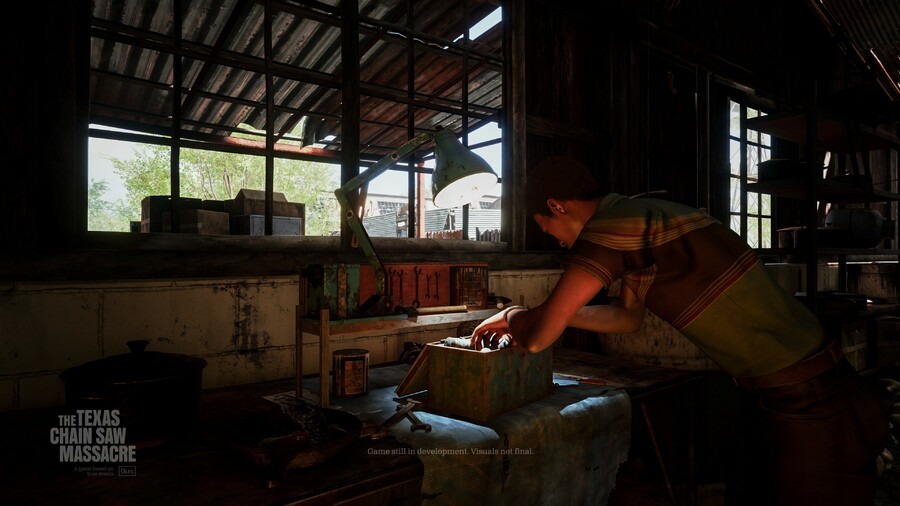
Obviously we have some familiar faces in the game, but you're introducing new ones, like your cast of victims. How are you striking a balance between delivering an authentic experience for fans and introducing new ideas?
KM: Gun and ourselves have been working closely with Kim Henkel, the rights holder, so these [new characters] have been signed off by him.
DC: One thing that was important was that, as we said, it's like a prequel. This isn't just a bunch of random characters — everything was driven from story, even though it's an asymmetrical multiplayer game and not a single player campaign. There's a backstory to this whole game. We spent a lot of time in the pre-production process coming up with these characters. Who are they, where do they come from, what state are they from? And that drove what character they were. Like, who were we gonna find for the mocap, what kind of [voice over] were they gonna have, what kind of abilities were they gonna have.
It's the same with the family as well. So, looking at what they did in the film and their abilities helped drive some of those gameplay aspects. Hopefully what we've done is made a game that's completely driven by the IP and not just, anyone could make this with any IP and just reskin it.
Are you planning to add new killers or locations too?
DC: There's definitely not a limit on what we're gonna do post what we've announced so far. But anything we have done and are going to do, whether it's the victims or anything in the future, has got Kim Henkel's blessing, so it's considered canon.
It's the same for the locations as well. The house is the predominant location in the movie, and we've gone to a lot of effort to try and make even the lighting and that time of day the same as that end scene in the movie. The other two locations we've announced are the petrol station, which is in the movie as well, and the slaughterhouse, which is mentioned in the movie but you never see.
The exciting thing is going beyond the rooms you've seen in the film. So there's a few key rooms, like the kitchen, the lounge, and the dining room that, hopefully, when people go in there they'll really feel like they've been there before. We've made them extremely accurate. But knowing we've made these rooms, basements, and parts of the gardens that are outside of the movie, they're considered canon with the IP holder's blessing as well.
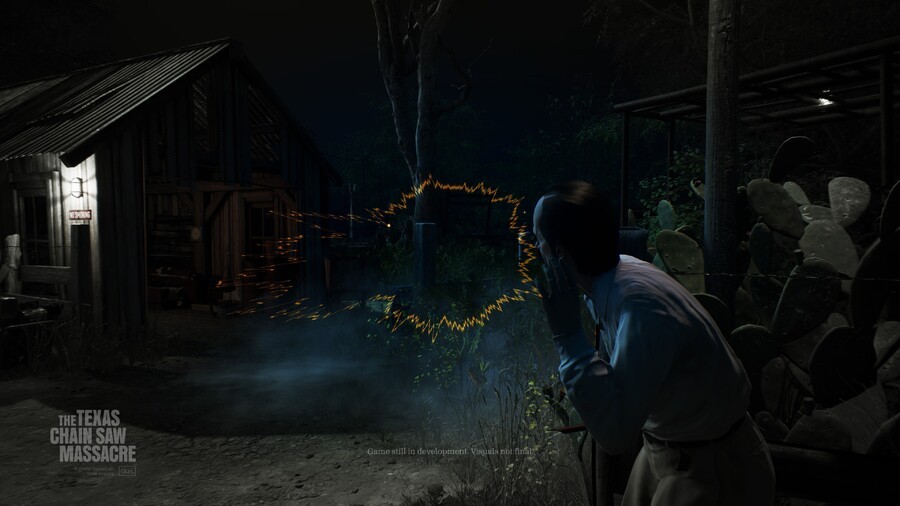
You've spoken about how stealth is important on both sides of the game. In the film, the victims wander into this helpless situation; they're not equipped to deal with what happens. For a game, that's not necessarily much fun, so what are you giving the victim characters so they stand a chance?
KM: There are methods of prolonging your survival, playing as the victims, but you're right, they are the underdogs. You're trapped, you haven't got anything on you, and you can't kill the family. That's kind of paramount — it adds to the fear and tension. As you go through, there will be little things you can do to outsmart them. You can squeeze through cracks in walls to try and put that distance between you and lose line of sight.
There are also opportunities to fight back along the way. You can collect items that can stun [the killers] for a bit. So while you can prolong your fate, you can't go all-out on the offensive.
So, why would people want to play as a victim? Why would anyone want to not be Leatherface? They all have different playstyles that cater to different player types. We've had focus tests with outside players, and they've said, "I really thought I wouldn't like playing as a victim, but I loved playing as a victim, just trying to survive that little bit more". The tension and the fear, they love that. And on the flip side, people say they love playing as Leatherface, playing with the chainsaw and the revs, scaring them as they walk around. Or turning [the chainsaw] off and being sneaky.
Someone else might prefer the Hitchhiker, laying traps so when they run out, they're trapped and they scream, so now everyone knows where they are. There's so many different playstyles for different people.
DC: And there's a variety of exit types as well, all around the map. There's not just one exit — there are a bunch all with their own challenges. And they're not all necessarily upstairs, you might have to get back to the basement where you started. You can use that to your advantage, to distract and deviate. You can sometimes let them think you're doing one thing when you're actually doing something else. There's lots of ways to play this, which we've found incredibly exciting.
KM: The natural rules of hide and seek just mean that anyone can play it. We've had people in our studio play from the IT group, to our HR department, through to the design teams and stuff. Everyone just picks it up and can play it and has a right blast. It's following those basic rules of just hiding in shadows, moving slowly, and sneaking your way around.
DC: It's challenged us in ways we weren't expecting. People say "Don't do doors in games" — we've doubled down on doors. The amount of tech and attention to doors, and that there are so many of them in the game... They can help block people, you can latch them, lock them again. It affects the sound of where you think the chainsaw's coming from or where the family are.
We've put in specific tech for the audio to help with how the noise paths work to make sure that shutting a door isn't just an aesthetic thing or a gameplay thing, there's an audio aspect to it.
The other part is lighting and shadows. Again, often in games, lighting is just an aesthetic thing, whereas here it's a fundamental part of gameplay. There's a great balancing act we've put between eye adaption, you need to be able to see what you're doing, but you also need to be able to hide in a shadow, so there's some extra tech in there so you can make the most of shadows and give victims advantages.
KM: Hiding in plain sight is something that's been core from the start. Holding your nerve, it's amazing what you can get away with, and that makes the game incredibly watchable and shareable when we go into spectate mode.
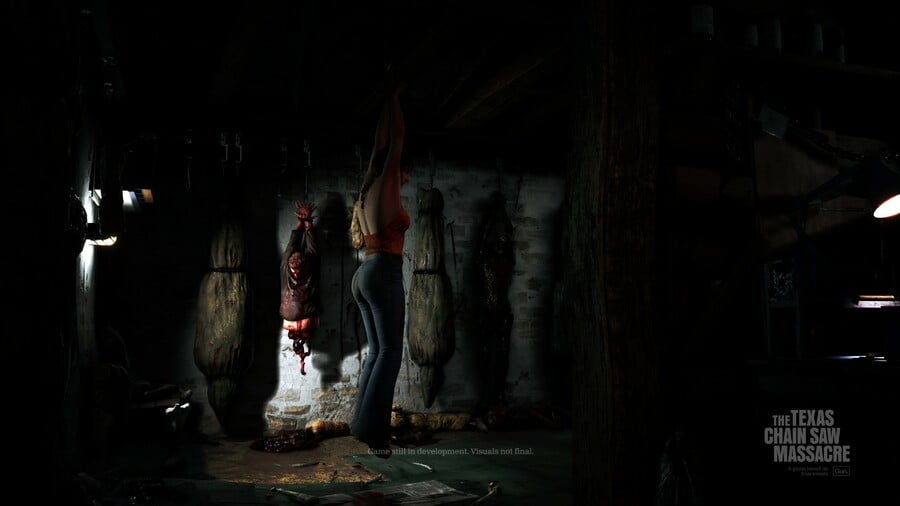
You've brought back the killers from the original film — this game is framed as a prequel, but is there any possibility we'd see the movie's victims make a return as well?
DC: It's very unlikely we'd bring the victims from the '74 movie, because as you say this is a prequel. Obviously, in the world of service-driven games, I would definitely not put a limit onto what else could happen. There's a bunch of creative fictional stuff we could explore, and there's obviously a bunch of other movies. But this initial release is all about that original. We're certainly excited to explore what that could mean.
As we're sort of on the subject — is the content from one movie enough? What measures have you taken to ensure the game doesn't get stale too quickly?
KM: There are levels of randomisation within the games themselves, so no two games will play the same. As we alluded to earlier, it's not you vs. AI, every person you play against will play differently. We've been playing this for over two years now, and it still feels fresh every time. Tactics come into play, counter tactics come in, and everyone's always shifting, and double bluffing — it'll naturally never have two games play the same.
Outside of that, there are levels of customisation to all the characters. They've [each] got a set of perks so you can create your own loadout for your character and tune them how you want. They've got sets of attributes based on how well they can do certain things. As you go through the unlock tree, you'll be able to customise them how you want.
On top of that we have the Grandpa character, who's an NPC. The killers feed him blood they find around the level or that they get from victims. As they feed him, he starts to wake up and his abilities start to come alive. Those abilities are chosen by the family before the game starts, and are unlockable as well.
So there's lots to explore creating your own loadouts, personalising characters, and unlocking new abilities.
How did you arrive at the 3 vs. 4 dynamic, which is quite different from how similar games operate?
KM: We did try throughout development to find the right balance, and ultimately, the size of the map, the interactions together... 3 vs. 4 just gave the best experience. That's where we've settled the abilities and the difference between the family members.
You've got Leatherface who's a destructive tank guy who goes around chainsawing everything. You've got the hunting skills of the Cook, who can hear and scout out [the victims], and then there's the trapping skills of the Hitchhiker. They complement each other really well, and that's where we ended up to give the best experiences.
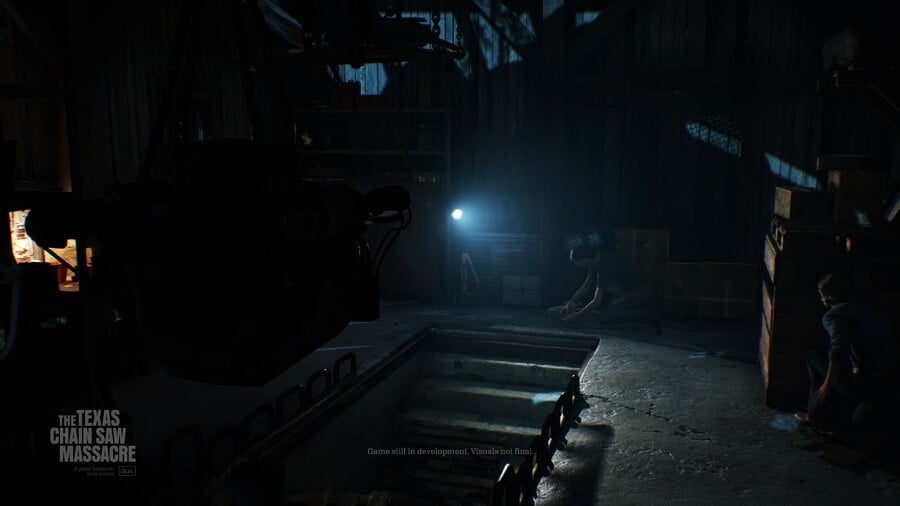
We've established this is a prequel, and it sets up this new mystery about the disappearance of Maria Flores. Are you planning to tell a story that will unravel as people play, or is it more just a context for the action?
DC: There will be a narrative, a sort of exposition as to why you're there. As for the narrative within the game itself, that's for you to decide. There will be hints and Easter eggs in the environments and voiceovers and stuff like that, so if you're paying attention we'll call out to that story. But we don't drive the narrative, that's up to the player. It's almost like you're creating your own prequel.
I imagine there will be people who film it and create their own prequel videos!
You mentioned earlier that the game is very watchable. Presumably, you've thought about how the game fits into the modern mould of watching games on Twitch?
DC: It's something that's come naturally through development. We've all worked on a bunch of games before, and sometimes you see when someone's finished a playtest, as soon as they stop playing they drop out and are disinterested. But we're seeing a massive amount of people stay tuned, shouting and hollering. We've found that's come naturally, because of the IP, because of the gameplay and how it's different every single time.
KM: And the community... Gun especially has built that fanbase through [Friday the 13th: The Game], and it's very loyal. Wes [Keltner, CEO of Gun Interactive] is making it easier for people to share content. Like the music, he's said that the music in the game, people will be able to stream and create content with the music and not fear takedowns. We love the community and want to give them that content to create their content.
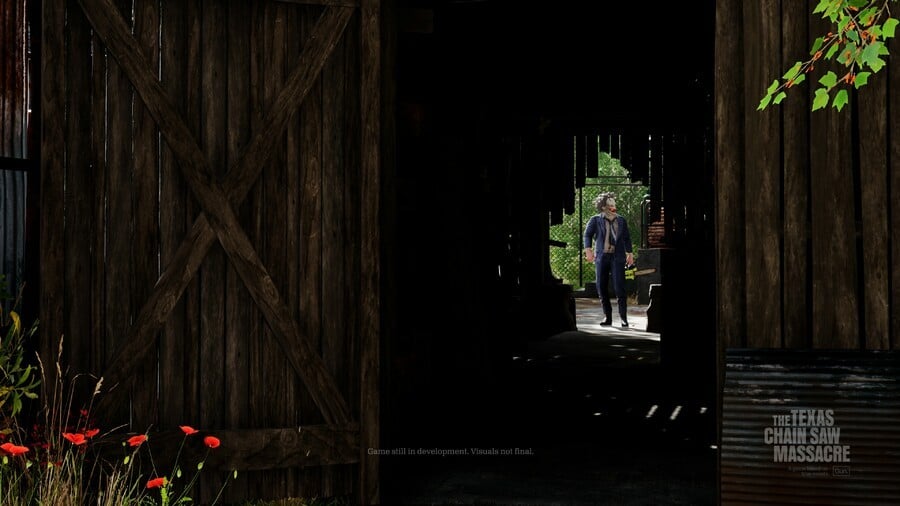
Speaking of Friday the 13th, which Gun also published, fans of that game will have their eyes on this. Can you speak to what they can expect from Texas? How are the games similar and how are they different?
KM: I mean it's night and day. The only way they're similar is they're both horror games. In terms of gameplay it's a totally different kettle of fish. We haven't skinned Friday the 13th with Texas Chain Saw Massacre, it doesn't work like that. Kim Henkel went to Gun initially and said, you did a fantastic job [on Friday the 13th], you know how to work with IP, can you do Texas for us? They were honoured to do that, massive fans of horror and the film over there. We take that film, that IP, and we make the game for that.
DC: We invested a lot of time upfront in the concept and prototype phase. We didn't want to go into production until we knew we had a great game. If it was just a reskin we wouldn't have needed that. It's a love letter to the fans, but also an introduction to the IP for newcomers.
Our hope is that when people play this, they'll go away and watch the film, and say oh my god, I've just been in that kitchen, and experienced what it's like to jump out that window. It was about watching the film and taking those moments, and saying how can we really leverage that, not just put them in as fan service but make them part of the core game?
KM: I mean authenticity is the biggest thing for this. It's not just the gameplay, it's the family, the animations, the mocap is all based on the characters from the movie. That's how the Hitchhiker walks. It's the same with the VO and sound effects and everything, it's all so authentic to the film.
DC: Ed Neal, who plays the Hitchhiker, has done the VO for the Hitchhiker again.
KM: We're always rewatching the film. We're looking at camera angles, lens types, shot times... Does this look right? Are we capturing the tone?
DC: There were field trips out to Texas and the locations, and tens of thousands of pictures taken. So when you're looking at the trees, the flowers, the house, the road — they are actually from Texas. Even the chainsaw, for example, it was accurately rebuilt from the film, and the sound you hear in the game is from that chainsaw. Even as you go through, the wallpaper, the light switches, scratches in the wall... Even now we're seeing things and correcting them.
Are you able to talk about your plans for post-launch support at all?
DC: There's definitely ambition, and we internally have got plans for what that may be, but yeah, we can't talk to it yet, sorry.
A big thank you to Darren and Kelvin for talking to us about The Texas Chain Saw Massacre. The game is coming to PS5 and PS4 next year. Are you excited to creep through the iconic house and escape Leatherface? Tell us in the comments section below.





Comments 19
"Yes. It's easy to reach for those obvious goals, but that's not what Gun does, and it's not what we do. How do we maximise our use of this [IP], what can we only do with this IP?
It's all about the family. Okay, then we need the playable family. We need Leatherface, the Hitchhiker, and the Cook, playable, as a family together. And then it goes through the gameplay, the stealth. You're playing against human opponents — you've not got vision cones and exclamation marks above their heads. You're watching for them. Are they looking at you? What are they gonna do? Can I hide here, can I not? What are they thinking? You just don't get that experience in anything that's scripted or single-player."
How do we maximise our use of this IP? This just sounds like the type of non sense EA would say where Single Player games don't sell. If you want to make an MP instead of a SP game cause you're interested in that experience just say that.
I don't agree with that at all a multiplayer game isn't a perfect fit for any horror franchise games like Resident Evil VII and Alien: Isolation were the perfect blueprint to make games out of iconic horror franchises but we live in the worst timeline so all we get is the same multiplayer game copy pasted ad nauseoum
@Keyblade-Dan multiplayer would work great with SAW , and F13 was good
"There wasn't the suggestion of a Resident Evil-style, single-player experience?"
Most definitely but then they saw how much budget that would require as opposed to a asymmetrical multiplayer which only needs a miniscule budget.
I wish Sumo success with this game but I hope this is the last famous horror ip that goes this route. How amazing would single player games of Hellraiser, Freddy or Evil Dead (☹️) made like Alien Isolation be!?
@Juanalf Seriously, give me a SP Freddy game!
Why asymmetrical multiplayer is perfect for (INSERT HORROR FRANCHISE HERE)
I don't personally play any of these type of games so I am kind of out of the loop, so my next statement might be completely off. Is Dead by Daylight one of these type of games, and hasn't it had all of these horror icons as the killer? Therefore what's the point of have separate games tied to one horror movie only?
Looking forward to this. And will be playing it day 1. Hopefully they’ll have the whole family there, not just Leatherface
I don't really care for any of these games, but if they should do another horror classic it should be the thing. First add a decent single player campaign and then a asymmetric multiplayer with among us/werewolf style gameplay. Among us would probably not even exist without the thing anyways.
And give me some of those amazing John Carpenter synth beats.
@Juanalf I do agree that we need more SP horror game, but I do have one little gripe when it comes to single player horror games; we always play as the victim/survivor.
It's not that I hate playing as the victim/survivor, I honestly don't mind and it's definitely scarier. But it has been getting kind of repetitive as of lately. It seems every SP horror game uses the same formula:
Step 1: Walk around the (abandoned) hospital/insane asylum/woods etc. and get from point A to point B while searching for items.
Step 2: Meet the killer.
Step 3: Run and find a place to hide.
Step 4: When they leave; leave the hiding spot.
Step 5: Repeat the steps until you reach the end of the game.
The ending itself can also be pretty predictable, usually concluding with you escaping or killing the killer.
I'm a firm believer in the phrase "Variety is the spice of life" and I've had my fill with playing as the victim. I'd like to play as the killer for a change like in Carrion, Splatterhouse or (If it counts) Manhunt.
Can you imagine how cool it would be if they made SP Halloween game where, instead of playing as Laurie Strode, you played as Michael Myers?
yep sounds as terrible as any other same type.
id love some interviews on proper games however.
@Ludacritz because there's one killer and multiple victims in those movies. How'd I do?
@Milktastrophe Excellent! It worked well enough for all the others, what's one more for the asymmetrical pile? (I'm sure the games fine and those who like it - like it!)
@MacRider how exactly would that be horror then though? Are you gunning for some kind of mental battle inside the killer's head or sth?
@Cherip-the-Ripper
"how exactly would that be horror then though?"
It honestly comes down to how the game is developed. I feel the reason most horror games go down the "playing as the victim" route is because it's much easier to scare the player.
Although that's true, playing as the killer can still be very disturbing, just not in the same way as playing as the victim.
Take the game "Feed me Billy" for example.
You're playing as a disturbed serial killer who goes out at night and kills people to feed some hole in your closet.
What makes this game very disturbing in my opinion is just how realistic it is. In this game, you're not killing bad guys like in Manhunt or monsters like in Splatterhouse, you're killing innocent people who you have never met before and has done nothing to you to justify their murder.
If you want to progress, you HAVE to kill these innocent people. The dialogue definitely doesn't make it any easier, which consists of them begging and crying for you to not kill them.
The whole experience was very disturbing to me and I wish to see more like it.
"Are you gunning for some kind of mental battle inside the killer's head or sth?"
No? 🤨
@MacRider you should probably stop playing these types of games and spend time with more joyful and peaceful activities you seem to have spent too much time in them already
@MacRider yeah I'm probably just desensitized but that sounds more like a good rip and tear session.
Hence my second question, I think diving into a serial killer's head and experiencing it like a fever dream could be more horror like but that's just my opinion.
@MacRider Why not combine both when playing the victim and fight back later in the game and become the hunter. Sounds like fun putting a character like Michael Myers and finishing him thats something no movie ever does.
Leave A Comment
Hold on there, you need to login to post a comment...